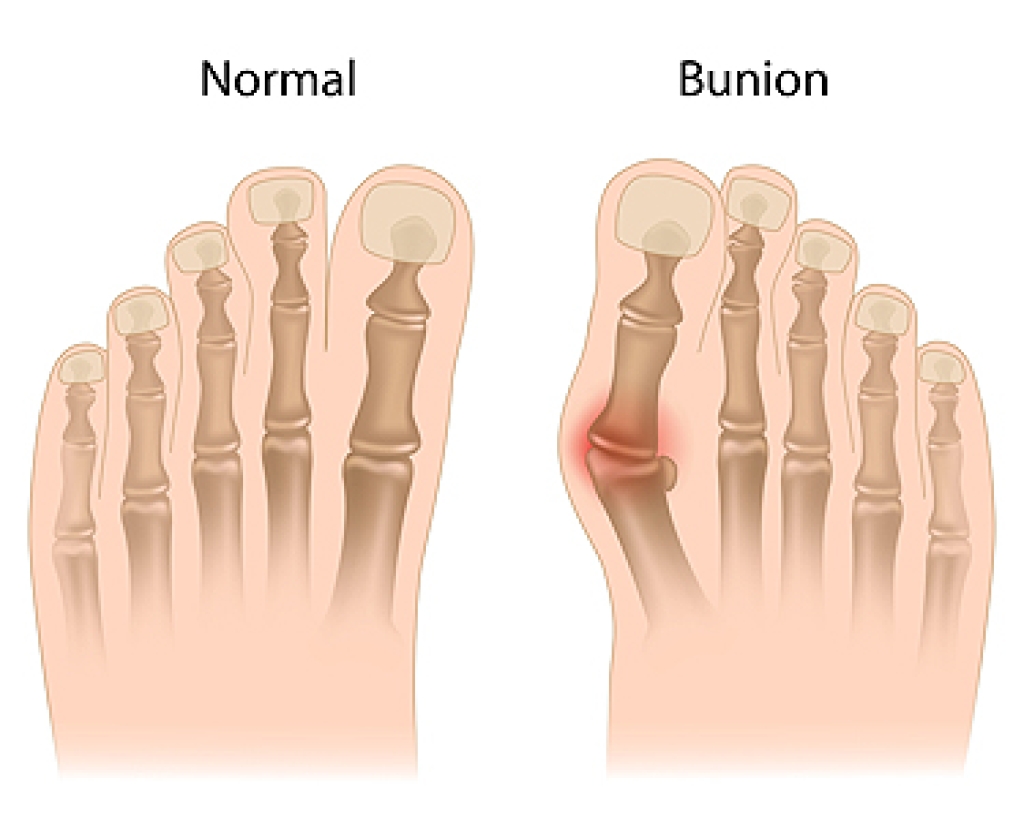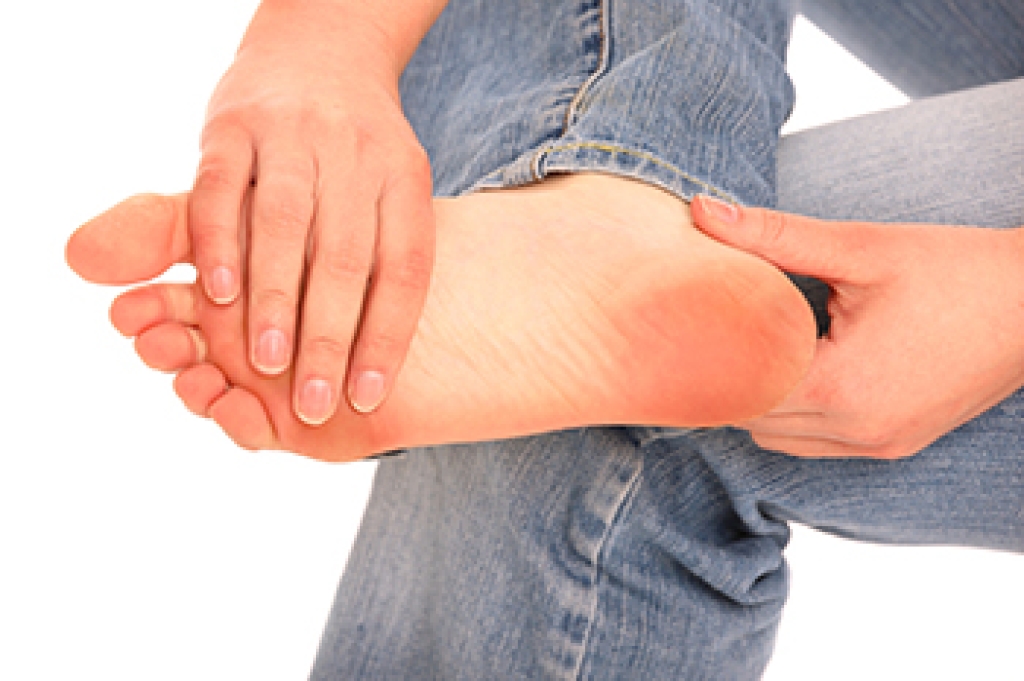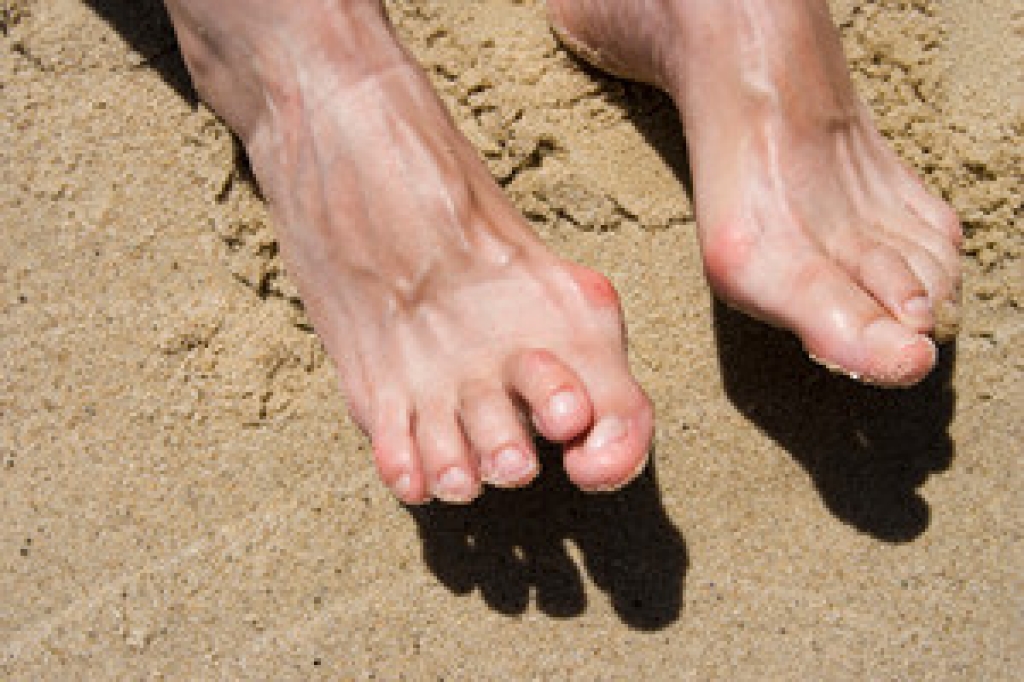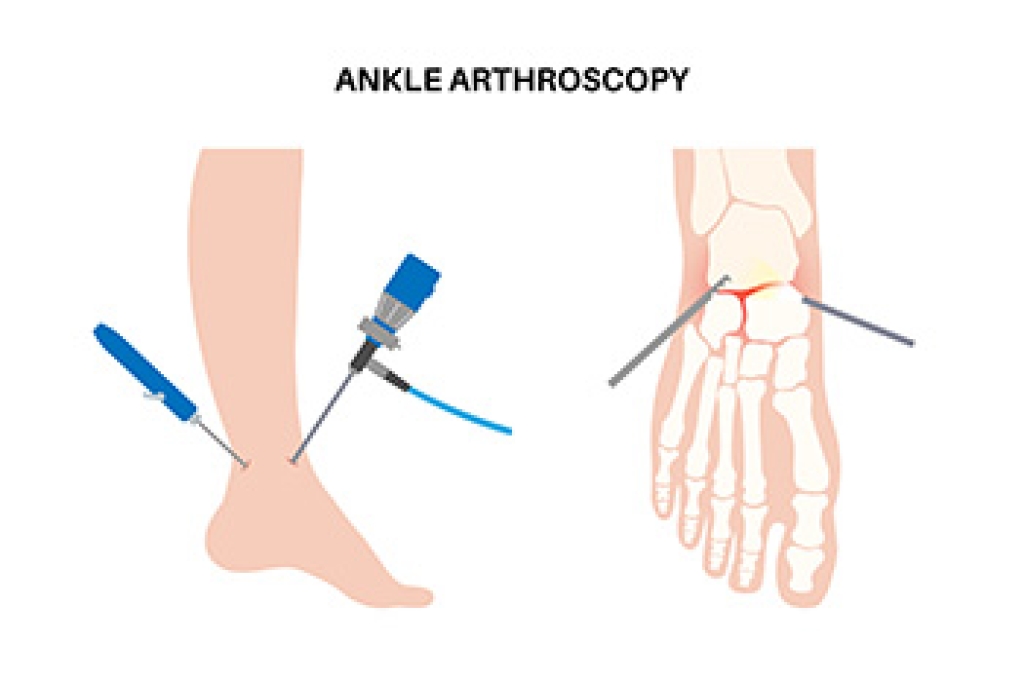 A bunion is a foot condition where there is a bony protrusion on the side of the big toe. It can develop as a result of genetic factors or from wearing shoes that do not have adequate room for the toes to move freely in. Larger shoes may need to be purchased for existing bunions, and it may be difficult to walk. Additionally, patients may notice the affected joint has become stiff and red, and it may be challenging to maintain balance. Specific foot stretches and exercises may be beneficial in improving general foot function by strengthening the muscles, tendons, and ligaments. Wearing custom-made orthotics may help to reduce the discomfort from having a bunion, and toe separators may help to alleviate a portion of the pain. If you have a painful bunion, it is suggested that you make an appointment with a podiatrist who can recommend treatment options, which may include surgery for permanent removal.
A bunion is a foot condition where there is a bony protrusion on the side of the big toe. It can develop as a result of genetic factors or from wearing shoes that do not have adequate room for the toes to move freely in. Larger shoes may need to be purchased for existing bunions, and it may be difficult to walk. Additionally, patients may notice the affected joint has become stiff and red, and it may be challenging to maintain balance. Specific foot stretches and exercises may be beneficial in improving general foot function by strengthening the muscles, tendons, and ligaments. Wearing custom-made orthotics may help to reduce the discomfort from having a bunion, and toe separators may help to alleviate a portion of the pain. If you have a painful bunion, it is suggested that you make an appointment with a podiatrist who can recommend treatment options, which may include surgery for permanent removal.
If you are suffering from bunion pain, contact one of our podiatrists of Ankle N Foot. our doctors can provide the care you need to keep you pain-free and on your feet.
What Is a Bunion?
Bunions are painful bony bumps that usually develop on the inside of the foot at the joint of the big toe. As the deformity increases over time, it may become painful to walk and wear shoes. Women are more likely to exacerbate existing bunions since they often wear tight, narrow shoes that shift their toes together. Bunion pain can be relieved by wearing wider shoes with enough room for the toes.
Causes
- Genetics – some people inherit feet that are more prone to bunion development
- Inflammatory Conditions - rheumatoid arthritis and polio may cause bunion development
Symptoms
- Redness and inflammation
- Pain and tenderness
- Callus or corns on the bump
- Restricted motion in the big toe
In order to diagnose your bunion, your podiatrist may ask about your medical history, symptoms, and general health. Your doctor might also order an x-ray to take a closer look at your feet. Nonsurgical treatment options include orthotics, padding, icing, changes in footwear, and medication. If nonsurgical treatments don’t alleviate your bunion pain, surgery may be necessary.
If you have any questions, please feel free to contact our offices located in Chicago, Elmhurst, Bartlett, IL and Chicago, IL . We offer the newest diagnostic and treatment technologies for all your foot care needs.





